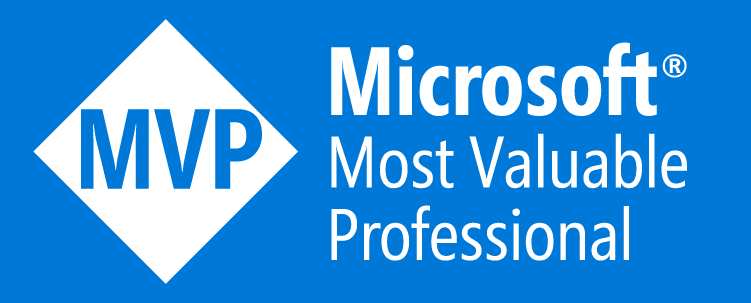在 WPF 触摸应用中,插入触摸设备,即可在应用里面使用上插入的触摸设备。在 WPF 使用触摸设备的触摸时,需要获取到触摸设备的信息,才能实现触摸
获取触摸设备插入
在 WPF 中,通过 Windows 消息获取触摸设备插入事件,在 src\Microsoft.DotNet.Wpf\src\PresentationCore\System\Windows\Input\Stylus\Wisp\WispLogic.cs 的 HandleMessage 将获取 Windows 消息,代码如下
internal override void HandleMessage(WindowMessage msg, IntPtr wParam, IntPtr lParam)
{
switch (msg)
{
// 忽略代码
case WindowMessage.WM_TABLET_ADDED:
OnTabletAdded((uint)NativeMethods.IntPtrToInt32(wParam));
break;
case WindowMessage.WM_TABLET_DELETED:
OnTabletRemovedImpl((uint)NativeMethods.IntPtrToInt32(wParam), isInternalCall: true);
break;
}
}
在 WPF 框架,使用 WM_TABLET_ADDED 和 WM_TABLET_DELETED 消息获取设备的插入和删除事件
如上面代码,在设备插入时,将会调用 OnTabletAdded 方法。如 WM_TABLET_ADDED 官方文档描述,以上代码获取的参数是 Wisptis 的 Index 序号。这是因为用户可以插入多个触摸设备,通过传入序号可以拿到插入的设备
在 WPF 中,每次插入触摸设备,都会重新更新所有的触摸设备的信息,而不是只更新插入的设备。在 OnTabletAdded 方法里面,将会调用 GetDeviceCount 方法,在 GetDeviceCount 方法里面将通过 PenThread 的 WorkerGetTabletsInfo 更新所有触摸设备的信息,代码如下
private void OnTabletAdded(uint wisptisIndex)
{
lock (__penContextsLock)
{
WispTabletDeviceCollection tabletDeviceCollection = WispTabletDevices;
// 忽略代码
// Update the last known device count.
_lastKnownDeviceCount = GetDeviceCount();
uint tabletIndex = UInt32.MaxValue;
// HandleTabletAdded returns true if we need to update contexts due to a change in tablet devices.
if (tabletDeviceCollection.HandleTabletAdded(wisptisIndex, ref tabletIndex))
{
// Update all contexts with this new tablet device.
foreach (PenContexts contexts in __penContextsMap.Values)
{
contexts.AddContext(tabletIndex);
}
}
}
}
private int GetDeviceCount()
{
PenThread penThread = null;
// Get a PenThread by mimicking a subset of the code in TabletDeviceCollection.UpdateTablets().
TabletDeviceCollection tabletDeviceCollection = TabletDevices;
if (tabletDeviceCollection != null && tabletDeviceCollection.Count > 0)
{
penThread = tabletDeviceCollection[0].As<WispTabletDevice>().PenThread;
}
if (penThread != null)
{
// Use the PenThread to get the full, unfiltered tablets info to see how many there are.
TabletDeviceInfo[] tabletdevices = penThread.WorkerGetTabletsInfo();
return tabletdevices.Length;
}
else
{
// if there's no PenThread yet, return "unknown"
return -1;
}
} // WPF 代码格式化就是这样
以上代码调用 WorkerGetTabletsInfo 方法实际的获取触摸信息逻辑是放在触摸线程,上面代码需要先获取触摸线程 PenThread 然后调用触摸线程类的 WorkerGetTabletsInfo 方法,在这个方法里面执行逻辑
触摸线程
在 WPF 触摸到事件 博客里面告诉大家,在 WPF 框架,为了让触摸的性能足够强,将触摸的获取放在独立的线程里面
在获取触摸信息时,也需要调度到触摸线程执行。在 WPF 中,通过 PenThread 类的相关方法可以调度到触摸线程
在调用 WorkerGetTabletsInfo 方法时,进入 WorkerGetTabletsInfo 方法依然是主线程,里面代码如下
internal TabletDeviceInfo[] WorkerGetTabletsInfo()
{
// Set data up for this call
WorkerOperationGetTabletsInfo getTablets = new WorkerOperationGetTabletsInfo();
lock(_workerOperationLock)
{
_workerOperation.Add(getTablets);
}
// Kick thread to do this work.
MS.Win32.Penimc.UnsafeNativeMethods.RaiseResetEvent(_pimcResetHandle.Value);
// Wait for this work to be completed.
getTablets.DoneEvent.WaitOne();
getTablets.DoneEvent.Close();
return getTablets.TabletDevicesInfo;
}
实际上以上代码是放在 PenThreadWorker.cs 文件中,在 WPF 的触摸线程设计上,触摸线程是一个循环,将会等待 PenImc 层发送触摸消息,或者等待 _pimcResetHandle 锁被释放。如上面代码,先插入 WorkerOperationGetTabletsInfo 到 _workerOperation 列表中,然后调用 RaiseResetEvent 方法释放 _pimcResetHandle 对象。触摸线程将会因为 _pimcResetHandle 被释放而跳出循环,然后获取 _workerOperation 列表里面的项,进行执行逻辑
主线程将会在 getTablets.DoneEvent.WaitOne 方法里面进入锁,等待触摸线程执行 WorkerOperationGetTabletsInfo 完成之后释放这个锁,才能让主线程继续执行
触摸线程的循环逻辑代码大概如下
internal void ThreadProc()
{
Thread.CurrentThread.Name = "Stylus Input";
while (!__disposed)
{
// 忽略代码
WorkerOperation[] workerOps = null;
lock(_workerOperationLock)
{
if (_workerOperation.Count > 0)
{
workerOps = _workerOperation.ToArray();
_workerOperation.Clear();
}
}
if (workerOps != null)
{
for (int j=0; j<workerOps.Length; j++)
{
workerOps[j].DoWork();
}
workerOps = null;
}
// 这是第二层循环
while (true)
{
// 忽略代码
if (!MS.Win32.Penimc.UnsafeNativeMethods.GetPenEvent(
_handles[0], _pimcResetHandle.Value,
out evt, out stylusPointerId,
out cPackets, out cbPacket, out pPackets))
{
break;
}
}
}
默认 WPF 的触摸线程都会在第二层循环,在 GetPenEvent 方法里面等待 PenImc 发送触摸消息或等待 _pimcResetHandle 释放。在跳出第二层循环,将会去获取 _workerOperation 的项,然后执行
WorkerOperation[] workerOps = null;
lock(_workerOperationLock)
{
if (_workerOperation.Count > 0)
{
workerOps = _workerOperation.ToArray();
_workerOperation.Clear();
}
}
if (workerOps != null)
{
for (int j=0; j<workerOps.Length; j++)
{
workerOps[j].DoWork();
}
workerOps = null;
}
获取触摸信息
在调用 WorkerOperationGetTabletsInfo 的 DoWork 方法时,将会在触摸线程获取触摸设备信息
private class WorkerOperationGetTabletsInfo : WorkerOperation
{
internal TabletDeviceInfo[] TabletDevicesInfo
{
get { return _tabletDevicesInfo;}
}
/////////////////////////////////////////////////////////////////////////
/// <summary>
/// Returns the list of TabletDeviceInfo structs that contain information
/// about all of the TabletDevices on the system.
/// </summary>
protected override void OnDoWork()
{
try
{
// create new collection of tablets
MS.Win32.Penimc.IPimcManager3 pimcManager = MS.Win32.Penimc.UnsafeNativeMethods.PimcManager;
uint cTablets;
pimcManager.GetTabletCount(out cTablets);
TabletDeviceInfo[] tablets = new TabletDeviceInfo[cTablets];
for ( uint iTablet = 0; iTablet < cTablets; iTablet++ )
{
MS.Win32.Penimc.IPimcTablet3 pimcTablet;
pimcManager.GetTablet(iTablet, out pimcTablet);
tablets[iTablet] = PenThreadWorker.GetTabletInfoHelper(pimcTablet);
}
// Set result data and signal we are done.
_tabletDevicesInfo = tablets;
}
catch (Exception e) when (PenThreadWorker.IsKnownException(e))
{
Debug.WriteLine("WorkerOperationGetTabletsInfo.OnDoWork failed due to: {0}{1}", Environment.NewLine, e.ToString());
}
}
TabletDeviceInfo[] _tabletDevicesInfo = Array.Empty<TabletDeviceInfo>();
}
上面代码的 IPimcManager3 接口是一个 COM 接口,实际逻辑是在 PenImc 层进行定义,在 PenImcRcw.cs 引用,代码如下
[
ComImport,
Guid(PimcConstants.IPimcManager3IID),
InterfaceType(ComInterfaceType.InterfaceIsIUnknown)
]
interface IPimcManager3
{
void GetTabletCount(out UInt32 count);
void GetTablet(UInt32 tablet, out IPimcTablet3 IPimcTablet);
}
在 PenImc 层的 PenImc.idl 文件里面,定义了公开的接口
[
object,
uuid(BD2C38C2-E064-41D0-A999-940F526219C2),
nonextensible,
helpstring("IPimcManager3 Interface"),
pointer_default(unique)
]
interface IPimcManager3 : IUnknown {
[helpstring("method GetTabletCount")] HRESULT GetTabletCount([out] ULONG* pcTablets);
[helpstring("method GetTablet") ] HRESULT GetTablet([in] ULONG iTablet, [out] IPimcTablet3** ppTablet);
};
在 WPF 中,在 C# 代码使用的不是最底层的方法,也就是 BD2C38C2-E064-41D0-A999-940F526219C2 组件只是 WPF 用的,而不是系统等给的接口
实际调用底层的代码是在 PenImc 层的 C++ 代码,但 PenImc 层的 C++ 代码只是一层转发调用而已,换句话说,如果使用 C# 调用底层的系统的组件也是完全可以的
如上面代码通过 GetTabletCount 方法获取当前的触摸设备,此方法是通过 COM 调用到在 PenImc.idl 文件定义的 GetTabletCount 获取的,实际定义的代码是 PimcManager.cpp 文件的 GetTabletCount 方法
STDMETHODIMP CPimcManager::GetTabletCount(__out ULONG* pcTablets)
{
DHR;
ULONG cTablets = 0;
LoadWisptis(); // Try to load wisptis via the surrogate object.
// we will return 0 in the case that there is no stylus since mouse is not considered a stylus anymore
if (m_fLoadedWisptis)
{
CHR(m_pMgrS->GetTabletCount(&cTablets));
}
*pcTablets = cTablets;
CLEANUP:
RHR;
}
以上代码里面用到了一些宏,如 DHR 的含义是定义 HRESULT 变量,代码如下
#define DHR \
HRESULT hr = S_OK;
而 CHR 表示的是判断 HRESULT 的值,如果失败了,将会调用 CLEANUP 标签的内容。在 CHR 里面用到 goto 的方法
#define CHR(hr_op) \
{ \
hr = hr_op; \
if (FAILED(hr)) \
goto CLEANUP; \
}
上面代码的 RHR 表示的是返回 HRESULT 变量
#define RHR \
return hr;
因此以上代码实际就是如下代码
STDMETHODIMP CPimcManager::GetTabletCount(__out ULONG* pcTablets)
{
HRESULT hr = S_OK;
ULONG cTablets = 0;
LoadWisptis(); // Try to load wisptis via the surrogate object.
// we will return 0 in the case that there is no stylus since mouse is not considered a stylus anymore
if (m_fLoadedWisptis)
{
hr = m_pMgrS->GetTabletCount(&cTablets);
if (FAILED(hr))
{
goto CLEANUP;
}
}
*pcTablets = cTablets;
CLEANUP:
return hr;
}
通过上面代码可以看到,实际调用的是 m_pMgrS 的 GetTabletCount 方法,也就是如下代码定义的方法
MIDL_INTERFACE("764DE8AA-1867-47C1-8F6A-122445ABD89A")
ITabletManager : public IUnknown
{
public:
virtual /* [helpstring] */ HRESULT STDMETHODCALLTYPE GetDefaultTablet(
/* [out] */ __RPC__deref_out_opt ITablet **ppTablet) = 0;
virtual /* [helpstring] */ HRESULT STDMETHODCALLTYPE GetTabletCount(
/* [out] */ __RPC__out ULONG *pcTablets) = 0;
virtual /* [helpstring] */ HRESULT STDMETHODCALLTYPE GetTablet(
/* [in] */ ULONG iTablet,
/* [out] */ __RPC__deref_out_opt ITablet **ppTablet) = 0;
virtual /* [helpstring] */ HRESULT STDMETHODCALLTYPE GetTabletContextById(
/* [in] */ TABLET_CONTEXT_ID tcid,
/* [out] */ __RPC__deref_out_opt ITabletContext **ppContext) = 0;
virtual /* [helpstring] */ HRESULT STDMETHODCALLTYPE GetCursorById(
/* [in] */ CURSOR_ID cid,
/* [out] */ __RPC__deref_out_opt ITabletCursor **ppCursor) = 0;
};
可以看到这是一个 COM 接口调用,实际使用的就是系统提供的 ITabletManager 组件
在底层系统组件,先调用 ITabletManager 的 GetTabletCount 方法 获取触摸设备数量,然后遍历触摸设备序号拿到 ITablet 对象
在 C# 代码里面的逻辑如下
pimcManager.GetTabletCount(out cTablets);
TabletDeviceInfo[] tablets = new TabletDeviceInfo[cTablets];
for ( uint iTablet = 0; iTablet < cTablets; iTablet++ )
{
MS.Win32.Penimc.IPimcTablet3 pimcTablet;
pimcManager.GetTablet(iTablet, out pimcTablet);
tablets[iTablet] = PenThreadWorker.GetTabletInfoHelper(pimcTablet);
}
这里的 pimcManager.GetTablet 方法将会调用到 PimcManager.cpp 的 GetTablet 方法
STDMETHODIMP CPimcManager::GetTablet(ULONG iTablet, __deref_out IPimcTablet3** ppTablet)
{
DHR;
switch (iTablet)
{
case RELEASE_MANAGER_EXT:
{
CHR(m_managerLock.Unlock());
}
break;
default:
{
CHR(GetTabletImpl(iTablet, ppTablet));
}
}
CLEANUP:
RHR;
}
STDMETHODIMP CPimcManager::GetTabletImpl(ULONG iTablet, __deref_out IPimcTablet3** ppTablet)
{
DHR;
LoadWisptis(); // Make sure wisptis has been loaded! (Can happen when handling OnTabletAdded message)
CComPtr<ITablet> pTabS;
CComObject<CPimcTablet> * pTabC;
// Can only call if we have real tablet hardware which means wisptis must be loaded!
CHR(m_fLoadedWisptis ? S_OK : E_UNEXPECTED);
CHR(CComObject<CPimcTablet>::CreateInstance(&pTabC));
CHR(pTabC->QueryInterface(IID_IPimcTablet3, (void**)ppTablet));
CHR(m_pMgrS->GetTablet(iTablet, &pTabS));
CHR(pTabC->Init(m_fLoadedWisptis?pTabS:NULL, this));
CLEANUP:
RHR;
}
本质调用的是 m_pMgrS 的 GetTablet 方法,也就是系统提供的 ITabletManager 的 GetTablet 方法 获取 ITablet 接口。只是在 C++ 代码里面,将 ITablet 接口再做一层封装,返回给 C# 的是 IPimcTablet3 接口
接下来就是通过 PenThreadWorker 的 GetTabletInfoHelper 方法获取触摸信息
private static TabletDeviceInfo GetTabletInfoHelper(IPimcTablet3 pimcTablet)
{
TabletDeviceInfo tabletInfo = new TabletDeviceInfo();
tabletInfo.PimcTablet = new SecurityCriticalDataClass<IPimcTablet3>(pimcTablet);
pimcTablet.GetKey(out tabletInfo.Id);
pimcTablet.GetName(out tabletInfo.Name);
pimcTablet.GetPlugAndPlayId(out tabletInfo.PlugAndPlayId);
int iTabletWidth, iTabletHeight, iDisplayWidth, iDisplayHeight;
pimcTablet.GetTabletAndDisplaySize(out iTabletWidth, out iTabletHeight, out iDisplayWidth, out iDisplayHeight);
tabletInfo.SizeInfo = new TabletDeviceSizeInfo(new Size(iTabletWidth, iTabletHeight),
new Size(iDisplayWidth, iDisplayHeight));
int caps;
pimcTablet.GetHardwareCaps(out caps);
tabletInfo.HardwareCapabilities = (TabletHardwareCapabilities)caps;
int deviceType;
pimcTablet.GetDeviceType(out deviceType);
tabletInfo.DeviceType = (TabletDeviceType)(deviceType -1);
//
// REENTRANCY NOTE: Let a PenThread do this work to avoid reentrancy!
// The IPimcTablet3 object is created in the pen thread. If we access it from the UI thread,
// COM will set up message pumping which will cause reentrancy here.
InitializeSupportedStylusPointProperties(pimcTablet, tabletInfo);
tabletInfo.StylusDevicesInfo = GetStylusDevicesInfo(pimcTablet);
// Obtain the WispTabletKey for future use in locking the WISP tablet.
tabletInfo.WispTabletKey = MS.Win32.Penimc.UnsafeNativeMethods.QueryWispTabletKey(pimcTablet);
// If the manager has not already been created and locked, we will lock it here. This is the first opportunity
// we will have to lock the manager as it will have been created on the thread to instantiate the first tablet.
MS.Win32.Penimc.UnsafeNativeMethods.SetWispManagerKey(pimcTablet);
MS.Win32.Penimc.UnsafeNativeMethods.LockWispManager();
return tabletInfo;
}
实际调用的就是 ITablet 接口 的方法
以上代码的 pimcTablet.GetKey 方法是在 C++ 层封装的,而不是系统提供的
STDMETHODIMP CPimcTablet::GetKey(__out INT * pKey)
{
DHR;
CHR(pKey ? S_OK : E_INVALIDARG);
*pKey = (INT)PtrToInt(m_pTabS.p);
CLEANUP:
RHR;
}
CComPtr<ITablet> m_pTabS;
在 WPF 框架,获取的方法本质就是通过 Tablet PC 系统组件获取
更多触摸请看 WPF 触摸相关
本文会经常更新,请阅读原文: https://blog.lindexi.com/post/dotnet-%E8%AF%BB-WPF-%E6%BA%90%E4%BB%A3%E7%A0%81%E7%AC%94%E8%AE%B0-%E6%8F%92%E5%85%A5%E8%A7%A6%E6%91%B8%E8%AE%BE%E5%A4%87%E7%9A%84%E5%88%9D%E5%A7%8B%E5%8C%96%E8%8E%B7%E5%8F%96%E8%AE%BE%E5%A4%87%E4%BF%A1%E6%81%AF.html ,以避免陈旧错误知识的误导,同时有更好的阅读体验。
如果你想持续阅读我的最新博客,请点击 RSS 订阅,推荐使用RSS Stalker订阅博客,或者收藏我的博客导航
 本作品采用
知识共享署名-非商业性使用-相同方式共享 4.0 国际许可协议
进行许可。欢迎转载、使用、重新发布,但务必保留文章署名林德熙(包含链接:
https://blog.lindexi.com
),不得用于商业目的,基于本文修改后的作品务必以相同的许可发布。如有任何疑问,请
与我联系
。
本作品采用
知识共享署名-非商业性使用-相同方式共享 4.0 国际许可协议
进行许可。欢迎转载、使用、重新发布,但务必保留文章署名林德熙(包含链接:
https://blog.lindexi.com
),不得用于商业目的,基于本文修改后的作品务必以相同的许可发布。如有任何疑问,请
与我联系
。
无盈利,不卖课,做纯粹的技术博客
以下是广告时间
推荐关注 Edi.Wang 的公众号

欢迎进入 Eleven 老师组建的 .NET 社区

以上广告全是友情推广,无盈利

